Did you miss the previous part in this backlinks analysis series? No worries, you can catch up right here: Analysis of 1 Million Backlinks: Workday (Part 4/10)

TL;DR – We analyzed 1 million backlinks via 10 random sample sets of 100,000 backlinks across 10 different websites from a variety of business verticals to determine how the link metrics from those backlinks would impact gains or losses in organic search visibility.
A Quick Word About Link Analysis at Scale
If there was just one piece of advice I could give regarding link analysis, it would be this: don’t ever manually review hundreds of thousands of backlinks one by one!
Seriously, don’t do it! You will burn out or fail (likely both) and your client/manager will be very upset with you for not making proper use of your time.
What you should do is look for patterns, trends and commonalities among link metrics for a given set of URLs to identify unnatural links.
Pro Tip: Powerful crawlers and anchor text classifiers like URL profiler can literally save you hundreds of hours of grunt work. We’re in no way, shape or form affiliated with them, but we highly recommend checking them out!
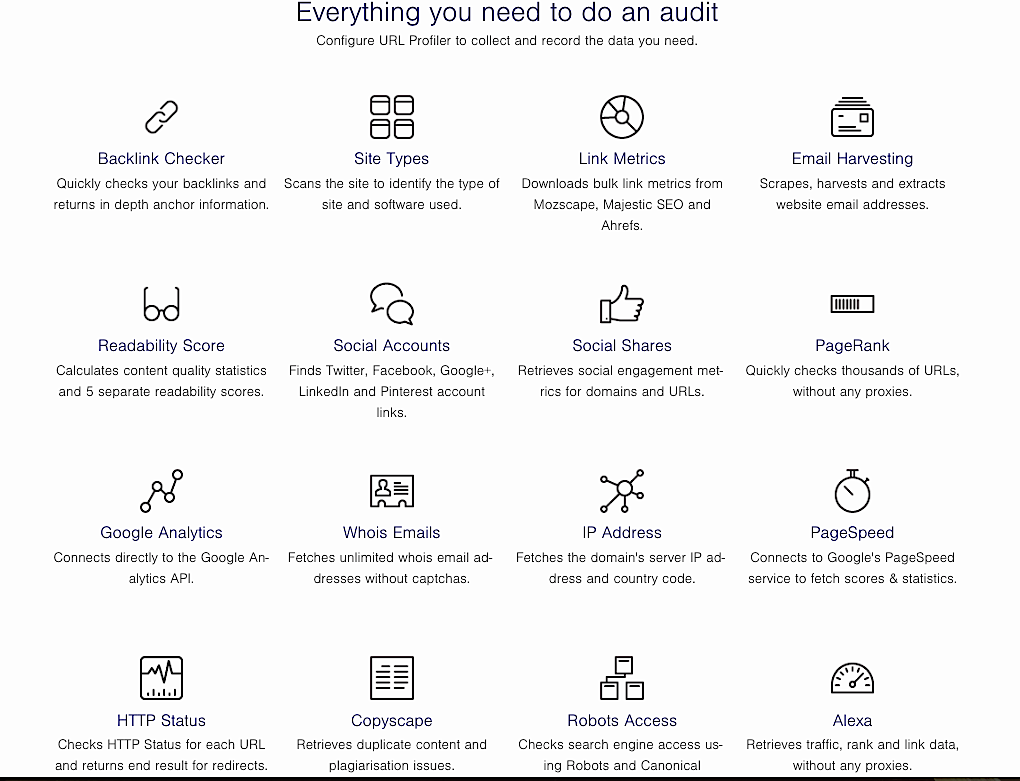
Here’s a link audit tool stack that I’d recommend:
Upon completing a link audit, you should have a few outputs to work with:
- Danger List – These are the links that are extremely likely to be unnatural and should be considered for disavowal.
- Caution List – These are the links that could be unnatural and must be manually audited to determine if they are safe or dangerous.
- Safe List – These are trustworthy, authoritative links that are most likely to be natural. Getting more of these will help boost organic visibility.
- Link Schemes – These are large groups of similar links that are coming from the same source, and are the most probable cause of site-wide links.
- Link Opportunities – Some websites (especially popular brands) earn natural, high quality links without knowing it. An audit will help you discover those sources, so you can build relationships and earn more links.
- Link Equity Consolidation – In almost every case, there are authoritative inbound links pointing to 404 pages on a given website. Those 404 pages should be revived by implementing 301 redirects to a live final destination URL to reclaim the lost link equity.
Link Metrics Considered
The link metrics can be segmented into 4 key categories:
- Diversity
- Trust
- Authority
- Relevance
These are the primary link metrics that will be used to evaluate HelloFresh’s backlink profile:
- Majestic Citation Flow – Rates how influential a URL may be based on how many sites are linking to it, based on a 100-point scale.
- Majestic Trust Flow – Predicts how trustworthy a page is based on the trustworthiness of those sites that are linking to it, based on a 100-point scale.
- Moz Spam Score – Rates the level of penalization risk associated with a given URL, based on a scale of 0-17 where any rating of 11 or higher is likely to be spam.
- Moz Domain Authority – An overall website rating that is calculated by metrics, such as linking domains, number of total links, MozRank and MozTrust, into a single 100-point logarithmic score.
- AHrefs Referring IP C-Class Diversity – IP Addresses are divided into lettered blocks (AAA.BBB.CCC.DDD). The more referring C Class Duplicates that exist within the link profile indicates that the site is likely to be engaging in link networking.
- AHrefs URL Rating – Prediction score for how well a page is likely to rank in organic search results, based on a 0-100 scale.
Learn More: Links Are Still a Major Ranking Factor for Google [podcast]
Domains Evaluated
We included the following websites in our study:
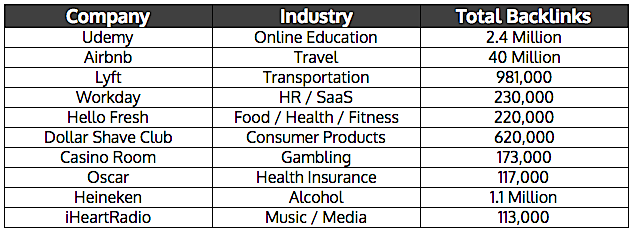
Analysis of 1 Million Backlinks: HelloFresh
HelloFresh delivers weekly recipes and fresh ingredients straight to your door so you can cook delicious, quick and healthy meals at home. Personally, I’ve never tried their service, but the options look pretty solid to me.
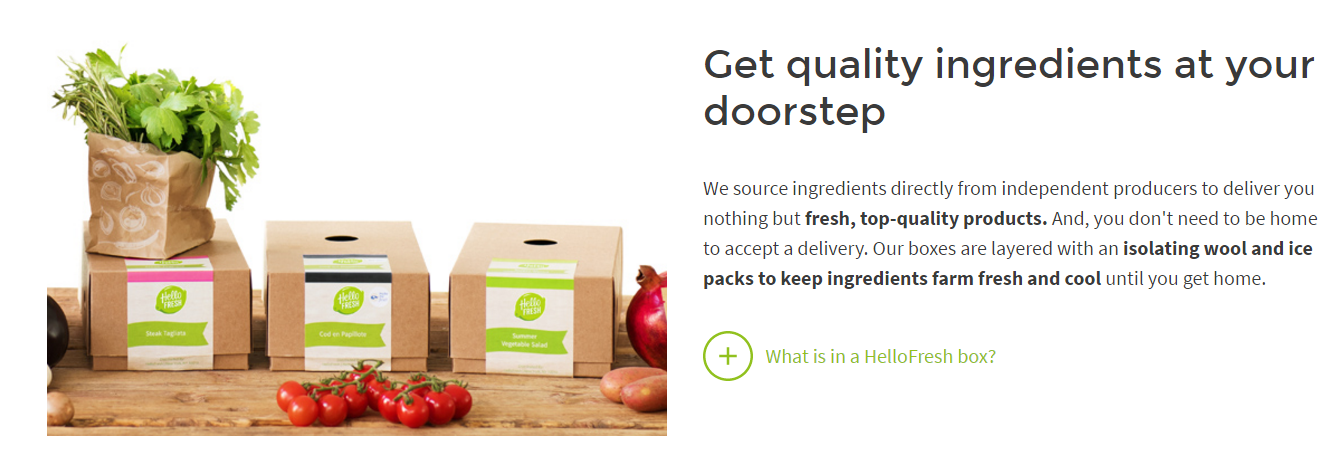
Key Insights: HelloFresh’s Link Profile
- Total Referring Domains: HelloFresh & Blue Apron are duking it out over the top spot in the quest for backlinks. At the domain level, Blue Apron is the beast of the ingredient delivery service niche – acquiring far more links from more referring domains over time than key competitors. While HelloFresh edges over smaller competitors like Freshly & Home Chef, they’re still chasing Blue Apron for the crown.
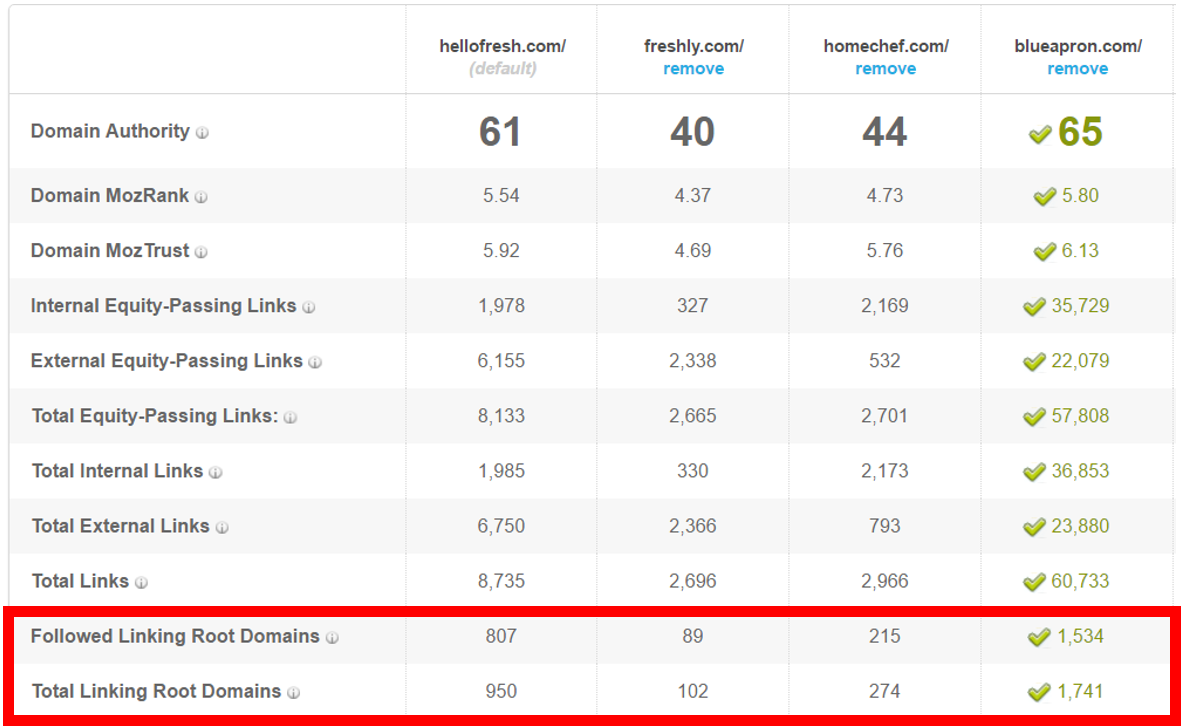
Source: Open Site Explorer
- SEMrush Comparison: Out of curiosity, I wanted to see if all those backlinks made any difference in organic traffic for Blue Apron. Of course it’s just an estimation, but it looks like Blue Apron is ranking for more target keywords in higher rank zone positions, therefore earning more traffic.
- SEMrush Traffic Cost Analysis: This is always fascinating to examine. SEMrush provides a rough estimation of how much a given site’s organic traffic would cost them in paid advertising dollars (great for making an SEO business case by the way).
- Insight: In this case, although HelloFresh is ranking for less total keywords and earns slightly less traffic, their traffic cost is approximately $2.4 million more than Blue Apron. This would lead me to believe that HelloFresh is earning higher quality traffic, or at least ranking for keywords that are bottom funnel and/or most relevant to business goals.
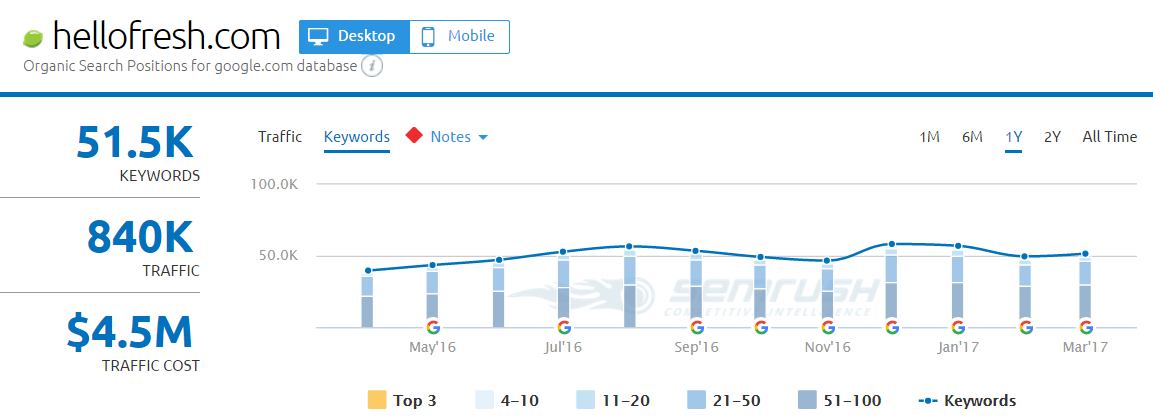
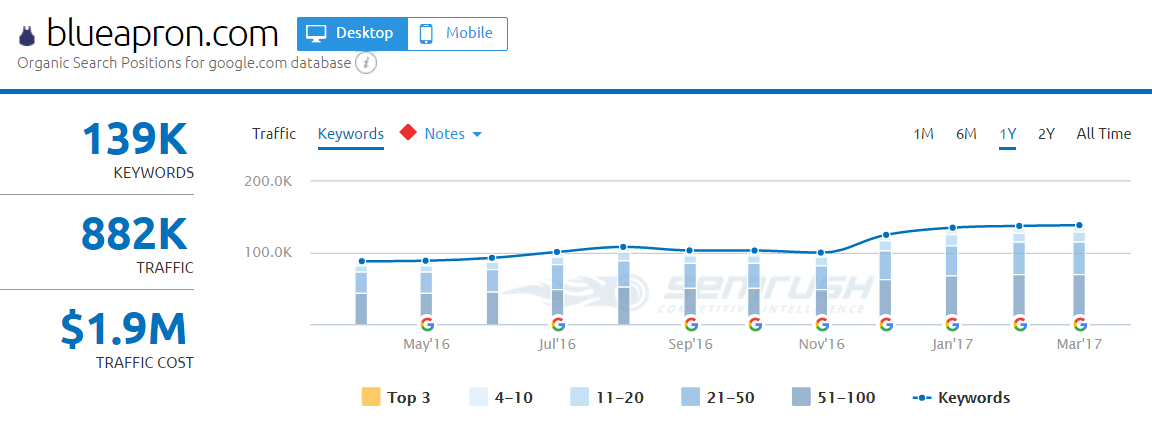
Source: SEMrush
After data sterilization, approximately 86k live links were found:
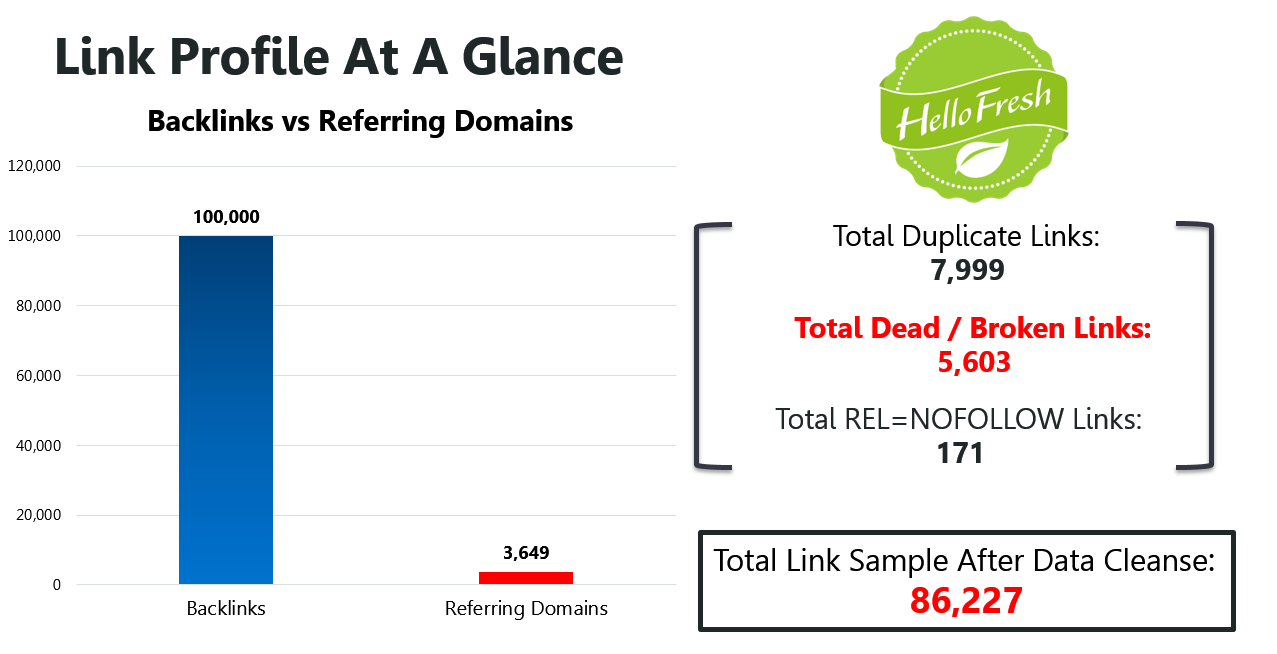
The distribution is showing a wide range of referring domains at various strengths, with the biggest cluster between DA 25-35, and a few outliers at 74-77 (this is actually quite typical of most sites we’ve reviewed in the study so far):
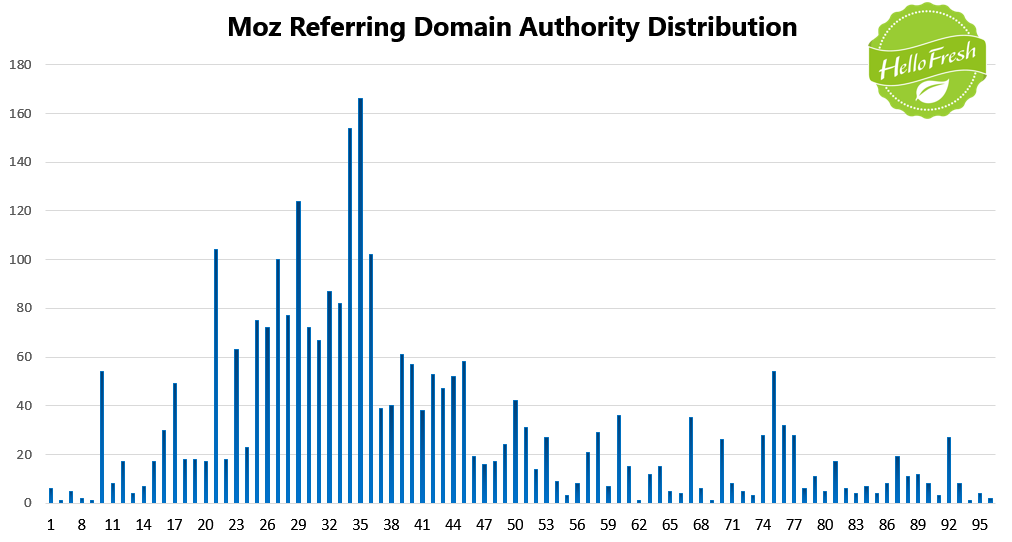
Cluster at DA 35
Upon inspecting the clusters at DA 25 – 35, there was nothing unnatural about any of the referring domains. I’d expect a site like HelloFresh to have tons of backlinks from low to mid-tier “mommy bloggers” and that’s exactly what they have. The example below is a typical link: a mommy blogger reviews HelloFresh and outlines the process of how it works.
Very common link from a typical mid-tier mommy blog.
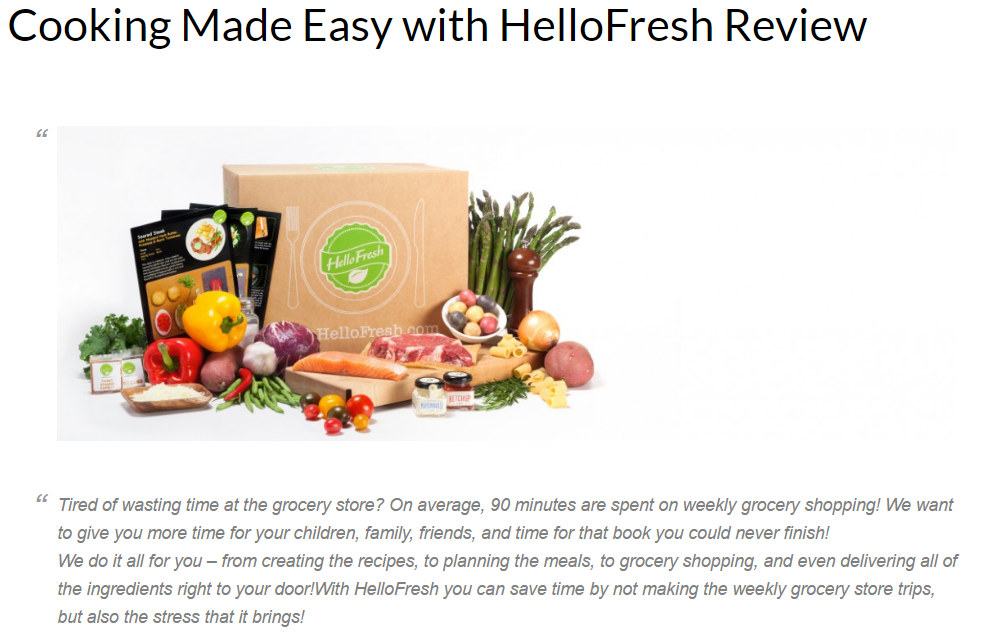
Outliers at DA 74 – 77
Products that disrupt traditional ways of business operation, such as HelloFresh, will naturally attract links from authoritative domains based on the unique story behind their product. Delivering ingredients to your home so you can cook without hassle is definitely a disruptor in my eyes.
One interesting way that HelloFresh is acquiring links is by leveraging in-house health professionals to comment on health subjects, such as “water weight” (see below).
Smart link acquisition strategy – leveraging in-house experts to comment on health topics:
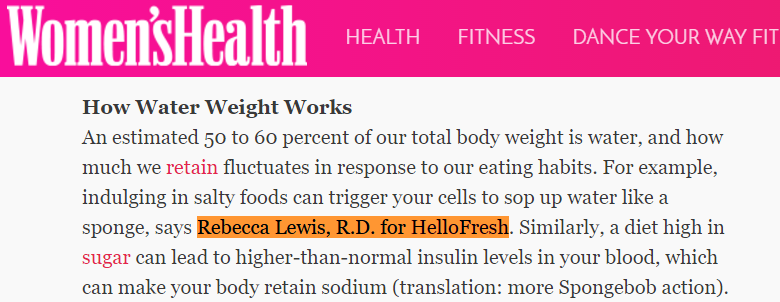
Ahrefs page-level authority skews heavily toward the low end, with a cluster at the 6-10 range, and a surge of links at zero. These ranges suggest that a significant portion of backlinks are unlikely to move the needle, despite some links with average authority.
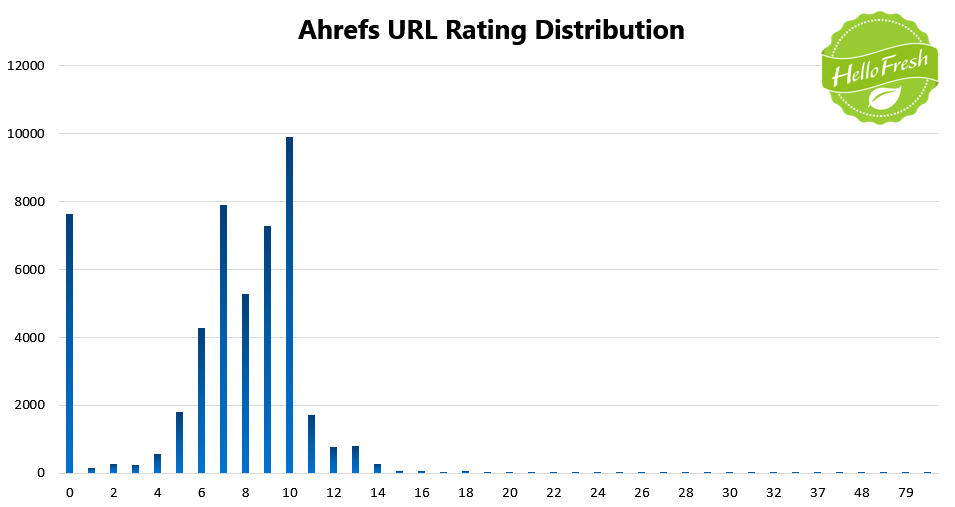
Example of URL Rating Zero
This is an interesting one. You’d expect a URL rating zero backlink to be spam potentially, or site-wide, but in this case it’s an unknown site scraping existing content from the web to build an audience.
Usually this method is frowned upon, but they’ve credited the original content back to HelloFresh by specifying the original URL with rel=”canonical” attribute:
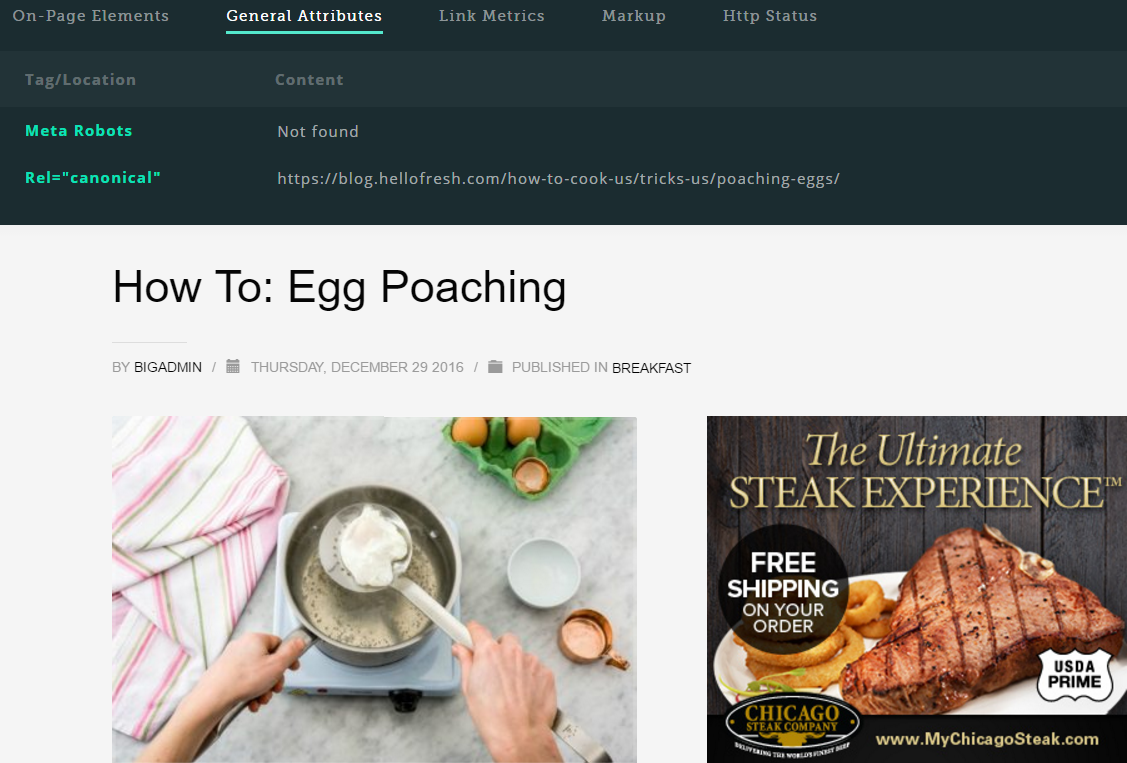
The Domain Trust Flow distribution has an extremely strong outlier at 27, an indication of duplicative site-wide links, some of which may be unnatural:
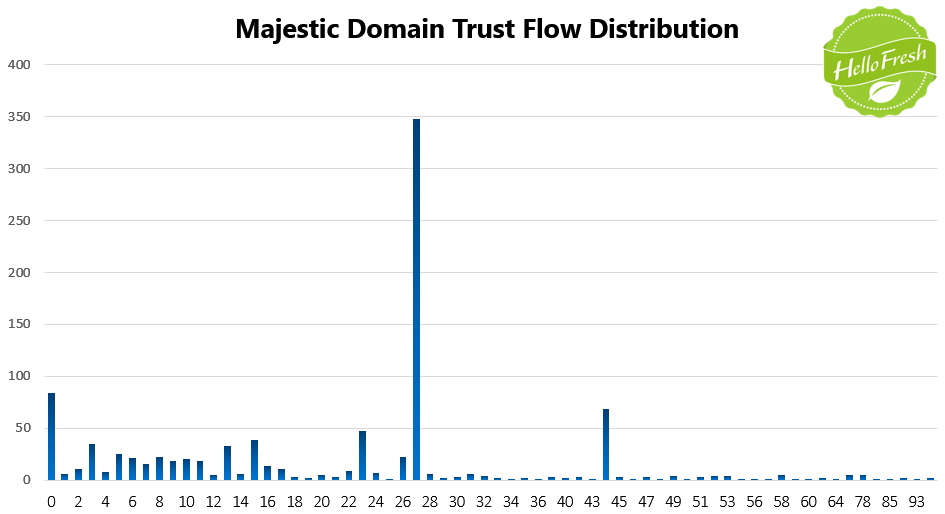
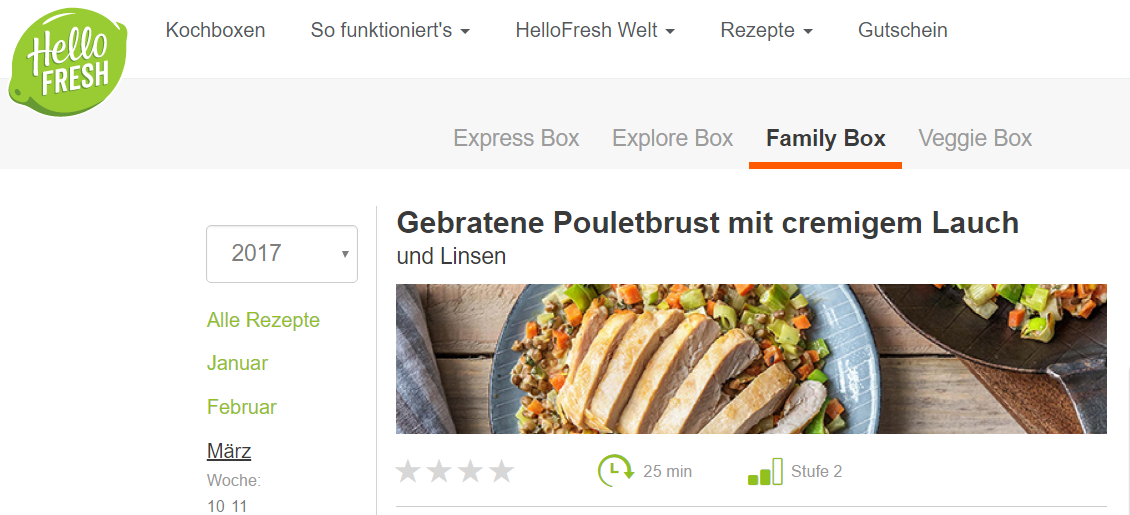
Learn More: What Is Link Roundup Link Building: The Practical Guide
International SEO: Root to Subdomain Linking
I’d recommend watching this Whiteboard Friday from Moz to get a deeper understanding of how this works and how it impacts SEO.
At the URL level, most backlinks have a Citation Flow rating of 8-18, an indication that the backlinks from Majestic’s index are unlikely to be influential: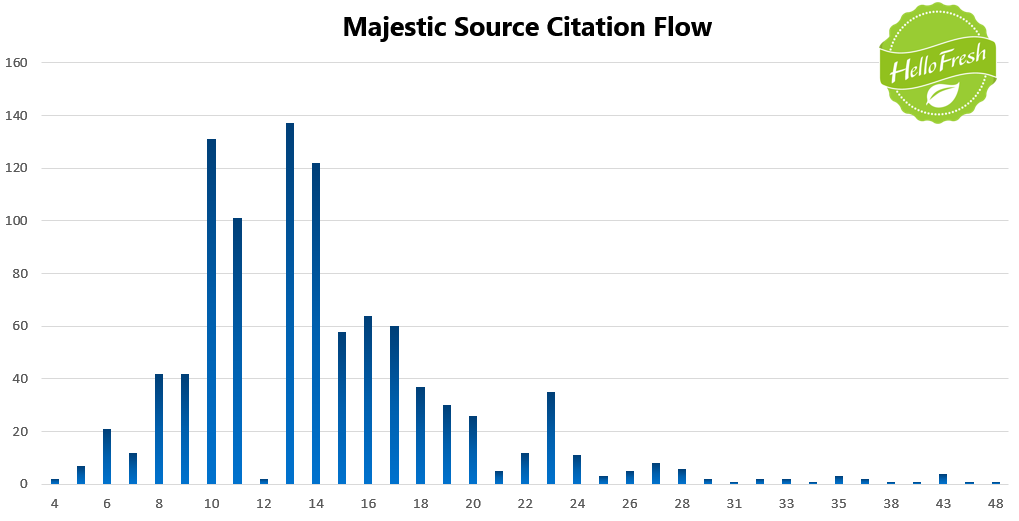
The Citation Flow outlier is a mommy blogger sidebar widget link:

Moz’s Spam Score (0-17 scale) recommends reviewing links with a score above 8. Most of HelloFresh’s links are below the alert threshold:
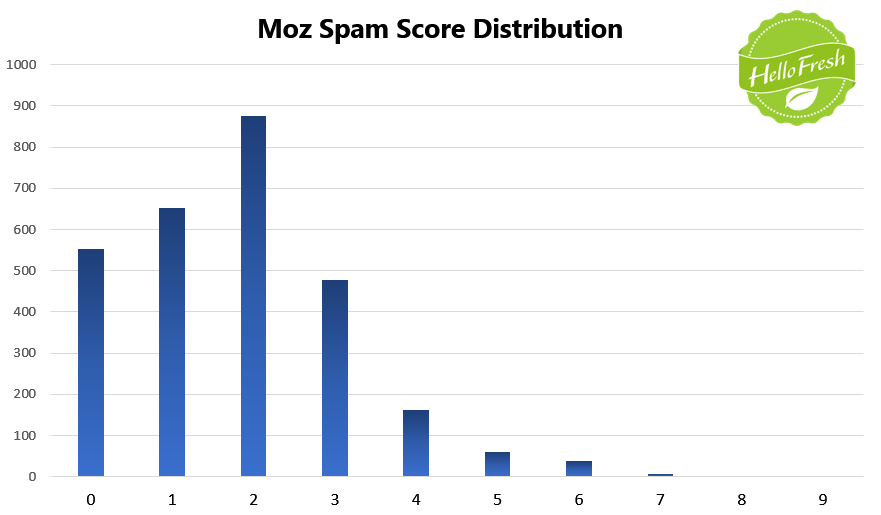
Mostly branded anchor text reflects a natural profile. However, there should be stronger signals for non-branded anchors like grocery delivery and ingredient delivery.
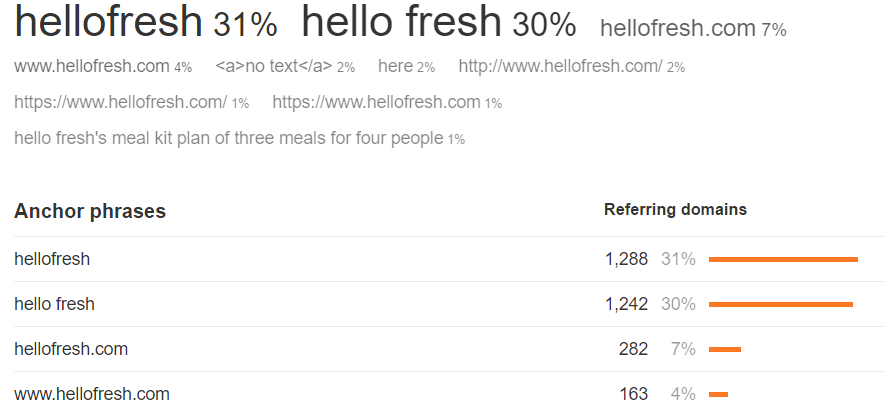
The anchor word cloud confirms a natural anchor text profile:

Source: Majestic
HelloFresh has a very natural link profile and is likely safe from penalization:
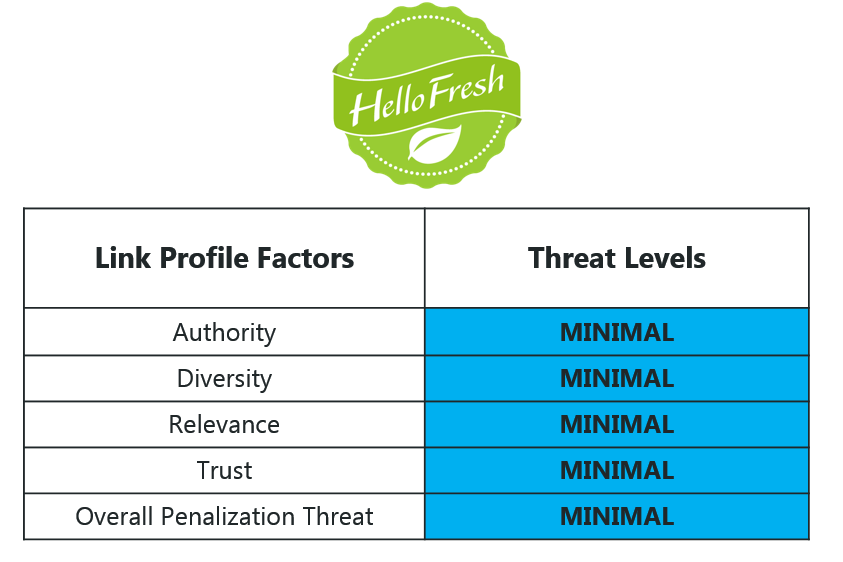
A huge number of footer links would likely be a cause for concern, but this is just linking from international subdomains to the root domain:
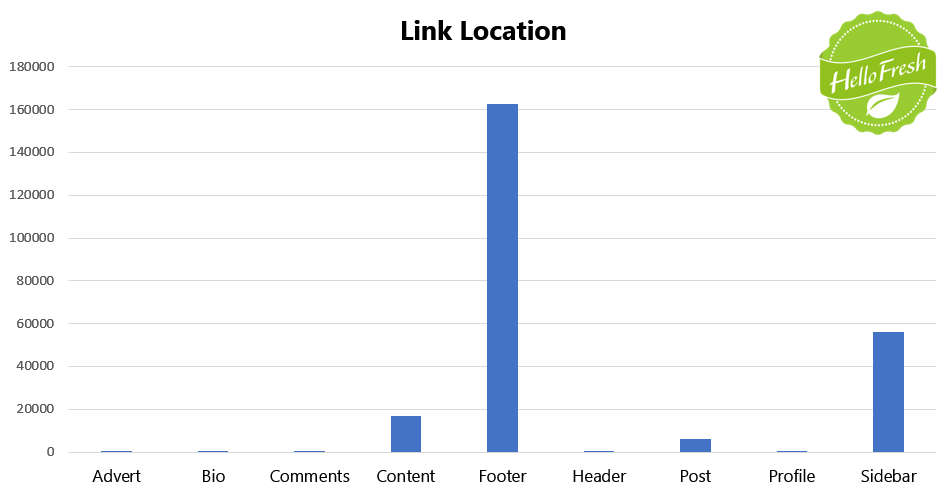
HelloFresh’s top referring domain, mscouponista is a low-quality directory link site. The rest of them are international subdomain links:
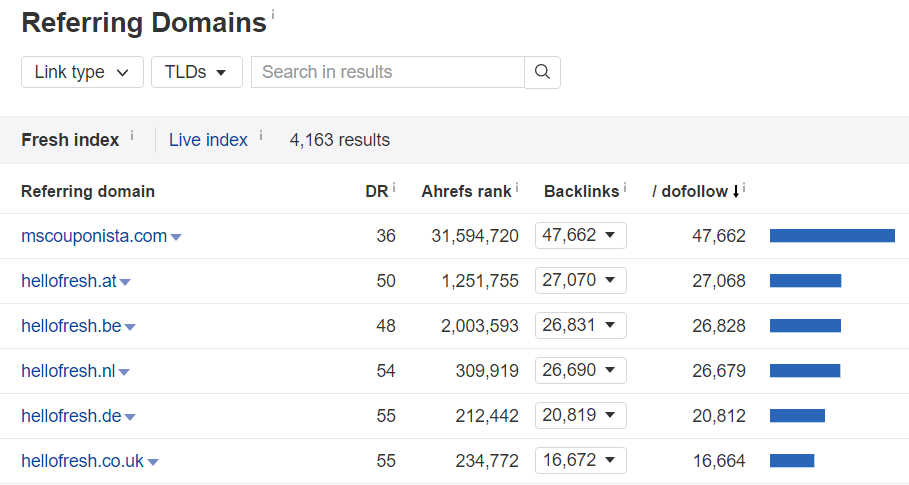
Example of a low-quality sidebar link from mscouponista.com:
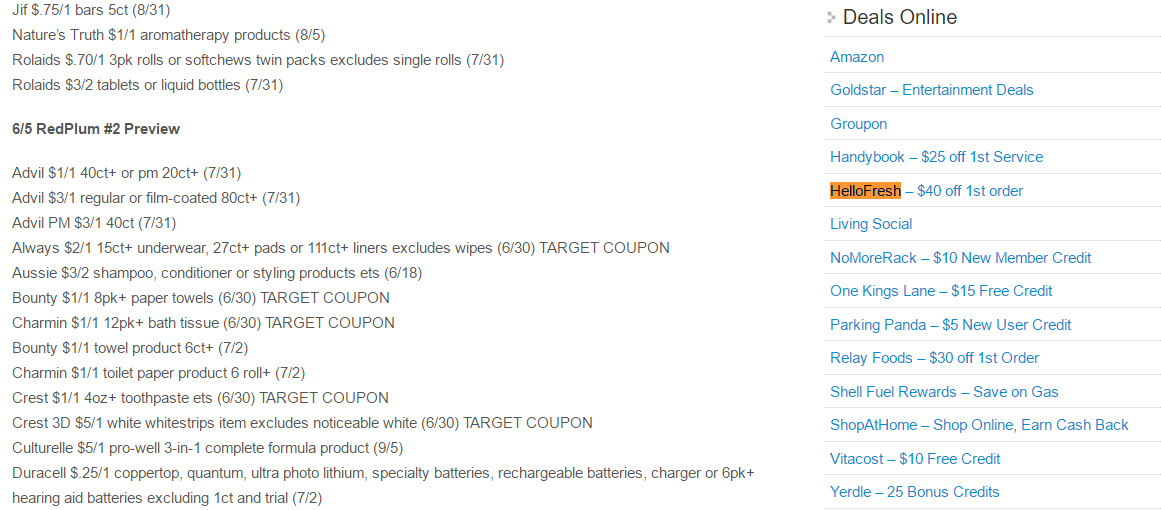
HelloFresh: Conclusions & Next Steps
- Leveraging in-house health experts = gold for link acquisition
- HelloFresh is edging smaller competitors, but trailing Blue Apron
- The site has a mostly natural looking link profile, with low risk for penalty
- Build diverse non-branded anchor text links
- Avoid sponsored widget links
- Disavow mscouponista.com
- Disavow Danger List URLs
- Review Caution List
Final Thoughts
An SEO-savvy in-house marketer with technical chops can likely work with HelloFresh’s P.R. and development teams to implement these recommendations.
If you’re not an SEO-savvy marketer or you just don’t have the time, Single Grain can help you! We’ve helped business of all sizes improve their marketing ROI, ultimately increasing revenue – check out some of our case studies here.
Click the green button for your FREE consultation to see how we can help you. (Just wanna geek out about SEO? That’s cool, too! Let’s chat.)
Have you done any link audits lately? What’s your process like? Let us know in the comments below!




